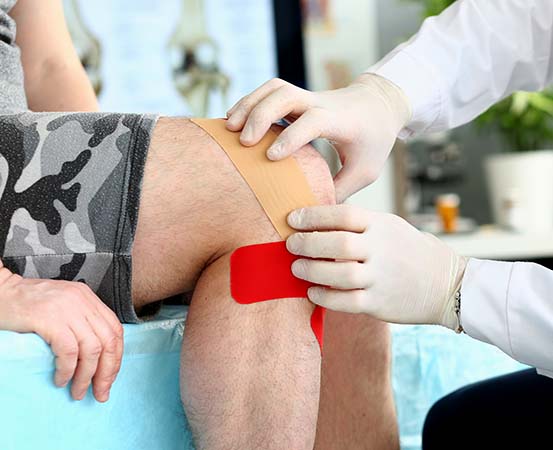
Synthetic oral steroids, clinically known as corticosteroids or glucocorticoids, are effective immunosuppressants prescribed for a wide range of diseases. These include inflammatory rheumatic disorders (rheumatoid arthritis), gastrointestinal and lung disorders (asthma and chronic obstructive diseases), various malignancies (cancers) and post organ transplantation.
Not to be mistaken for anabolic or performance-enhancing steroids, glucocorticoid (GC) therapy is helpful, and even lifesaving.
However, long-term GC therapy has numerous adverse side-effects — from bone and ocular (eyesight-related) issues to lipodystrophy (loss or abnormal distribution of adipose tissue or fat in certain regions of the body) and neuropsychiatric disorders.
One of the most serious side-effects is osteoporosis (low bone density leading to fractures) caused by glucocorticoids. About 30% to 50% of chronic glucocorticoid users develop secondary osteoporosis or glucocorticoid-induced osteoporosis (GIOP). Glucocorticoids cause a rapid decline in bone strength within the first three to six months. Despite this well-known adverse effect, many patients are not monitored or treated appropriately.
Side-effects of glucocorticoid therapy
“Glucocorticoids (steroids) may be lifesaving for those with serious illness. They are often used to suppress inflammation until other therapies take effect,” says Dr Jonathan D Adachi, professor emeritus, division of rheumatology, McMaster University, St Joseph’s Healthcare, Hamilton (Ontario, Canada).
However, they have direct and indirect effects on bone.
“The direct effects include increasing the breakdown of bone (by osteoclasts) and decreasing bone formation (by osteoblasts),” says Dr Adachi. “They also lead to death of osteocytes, the cells that are responsible for bone homeostasis (maintenance).
“The indirect effects include a decline in sex hormones that help to prevent bone breakdown. [Glucocorticoids] decrease calcium absorption from the GI [gastrointestinal] tract and increase urinary calcium excretion, and finally decrease muscle, leading to an increased risk for falling and fracturing. Bone loss is seen at all ages, but is most pronounced in older adults, of age greater than 50. Post-menopausal women, pre-pubertal [pre-adolescent] children, and those who require long-term glucocorticoids with drugs like prednisone exhibit a high risk of fracturing.”
Diagnosis of glucocorticoid-induced osteoporosis
Osteoporosis is characterised by changes in bone structure, leading to a decrease in bone mineral density (BMD) and an increased risk of fracture. In GIOP, the increased risk of fracture cannot be fully explained by changes in BMD. Changes in bone quality also seem to play a large role.
“There are tools available that help to identify those that are at increased risk for fracture and who might benefit from treatment to prevent bone loss,” says Dr Adachi. “This includes FRAX or CAROC. Bone-density measurements are helpful in identifying those that are losing bone mass.”
FRAX is WHO’s fracture risk-assessment tool, a computer-based algorithm that estimates the 10-year probability of hip fracture and major osteoporotic fracture. CAROC is a Canadian assessment tool.
Other tools such as the trabecular bone score and advanced imaging techniques give insight into bone quality; however, these are not used widely in clinical practice, says a 2021 review.
Treating and preventing osteoporosis
The review states that currently only about 15% of chronic glucocorticoid users are receiving optimal care. Glucocorticoids should be prescribed at the lowest dose and shortest duration.
“A diet that includes calcium up to 1,000 mg/day is important,” says Dr Adachi. “Supplementation for those with vitamin D deficiency should be taken. Exercise to maintain overall health is very important to prevent falls. Beyond this, there are drugs that should be seriously considered, particularly if you are identified as being at high risk for fractures.”
Oral bisphosphonates are the current mainstay of therapy, whereas osteoanabolic agents may be considered for those at highest risk of fracture.
Though this condition remains largely under-diagnosed and undertreated, there has been an increased awareness of it in recent years, with a spike in the number of patients receiving bisphosphonates (drugs to treat and prevent bone thinning), according to a 2015 review.
Glucocorticoid-induced osteoporosis should be seen as a widely preventable disease, says the 2021 review. Prevention or treatment of osteoporosis should be considered in all patients who receive prednisone (steroid medication). The duration of anti-osteoporotic treatment should be individualised, depending on the subject’s fracture-risk profile and the underlying inflammation evolution.
Is steroid-induced osteoporosis reversible?
“Glucocorticoid-induced osteoporosis is reversible,” says Dr Adachi. “Discontinuing [GC] therapy will result in recovery of bone loss, but [the bone loss] often does not get back to baseline levels. There are a number of medications that will reverse the loss of bone that is seen with glucocorticoids.
The doctor says he believes there is a common understanding that medication for osteoporosis is dangerous and harmful. “While it is true that all drugs have side-effects, the benefits of medication far outweigh the risks,” Dr Adachi says, recounting the lifestyle disruption that fractures and the associated immobility present, which can very well be minimised with preventative medicine.
Takeaways
- One of the major side-effects of steroids used in therapy is loss of bone mass and osteoporosis, increasing fracture risk.
- Steroid-induced osteoporosis, though preventable, remains largely unaddressed. Individualised treatment is recommended, including nutritious diet, calcium and vitamin supplementation, and exercise.
- This condition is reversible, and drugs like bisphosphonates are recommended.

















